Bodies rotting, dangerous chemicals: The environmental hazard unfolding in Gaza
Bodies rotting, dangerous chemicals: The environmental hazard unfolding in Gaza
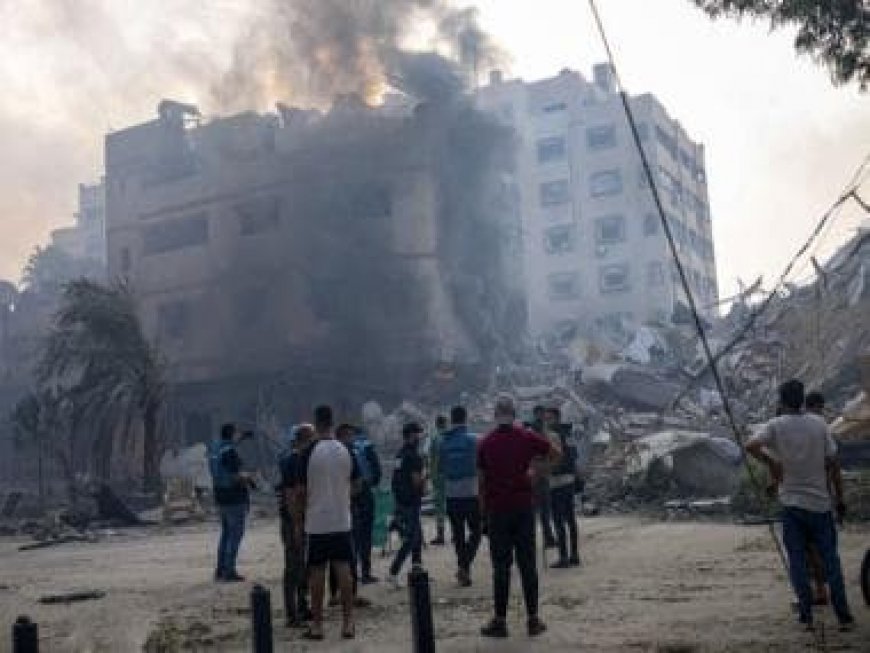
It’s been 14 days since the war between Israel and Hamas broke out. Israel has carried out fierce airstrikes in the Gaza Strip, claiming the lives of several thousands, in an attempt to wipe out Hamas militants, who had carried out daring attacks on 7 October, killing civilians and taking many as hostages.
And even as the residents of the Gaza Strip struggle under the bombardment and without any access to aid – supply of food, water and power has been cut off to the region – they also face the additional burden of an environmental crisis.
As the war rages on, we take a look at how this battle poses huge environmental crisis and what experts have to say.
Environmental toll in Gaza
Israel’s fierce and constant airstrikes aimed at the Gaza Strip has flattened houses, building and other structures, trapping many residents under the rubble. According to figures shared by the United Nations, an estimated 30 per cent of houses have been destroyed or damaged in the strikes.
As of 16 October, the Hamas interior ministry said that there were around 1,000 people trapped under the debris of these broken homes, sparking concerns about an environmental crisis. Officials worry that as help reaches late to these people trapped, they will die under the rubble, and their bodies will begin to decompose there. Studies have shown that decomposing corpses alter the chemistry of precious soil; the bodies leach soil nutrients such as iron, zinc, sulphur, calcium, and phosphorus, rendering the soil less fertile.
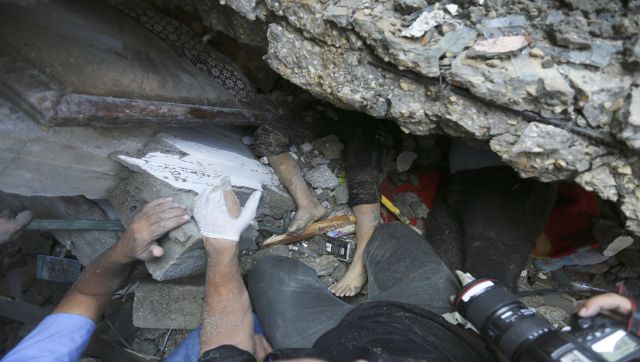
Additionally, human bodies also contain mercury from dental fillings and microplastics that can enter the soil and make it infertile.
Apart from the matter of bodies trapped, the rocket attacks also release a large number of chemicals and greenhouse gases into the aair. Experts state the plume of air left in the wake of a missile launched is filled with materials that can collect in the air over time, potentially altering the atmosphere in dangerous ways.
Rockets also produce heat-trapping greenhouse gases, like carbon dioxide. However, experts warn that the most dangerous aspect of rocket launches is small pieces of soot and a chemical called alumina. They get injected into the stratosphere and research shows that this material may build up in the stratosphere over time and slowly lead to the depletion of a layer of oxygen known as the ozone.
Sakher Al Nsour, former head of the Jordanian Geologists Syndicate, told The Jordan Times that the Israeli aggression on Palestinians has not been limited to targeting human beings alone; it has also extended to the environment by destroying the infrastructure of the environmental sector. This has been achieved through the use of hazardous and toxic materials in Palestine, leading to the destruction of sewage networks and reservoirs, as well as the continuous depletion of natural resources, Nsour said.
The constant bombardment of Gaza has also caused a thick layer of dust to collect in the air, which is not only a health hazard, but will also affect standing crops and water bodies. Speaking of the problem of dust, a journalist reporting from Gaza told the BBC, “We are hiding at home, blinded and choked by dust.”
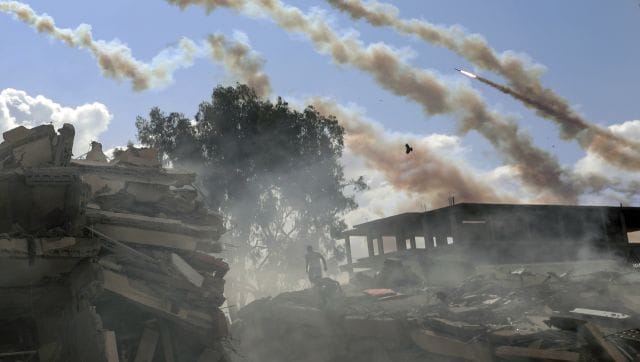
Humanitarian disaster unfolding in Gaza
The Gaza Strip, known to be one of the most densely-populated areas in the world is also seeing the unfolding of a humanitarian catastrophe.
The Hamas-run Gaza health ministry said 3,785 people have been killed in Gaza since the war began, the majority women, children and older adults. Nearly 12,500 were injured. This is not taking into consideration the latest blast near the Saint Porphyrius Church. The Orthodox Patriarchate of Jerusalem has condemned the blast, saying that the targeting of churches was a “war crime that cannot be ignored”.
Living in Gaza has also turned nearly impossible with the United Nations Relief and Works Agency (UNRWA) for Palestine Refugees, saying it has “become a hellhole”.

Speaking to BBC Newsday, she called for the siege on Gaza to be lifted as civilians needed humanitarian supplies immediately. “Time is running out. It has been almost two weeks. Two very long weeks UNRWA has not been able to bring in any supplies into Gaza,” she said.
Touma added that “the clock is ticking” and that she did not know when the Rafah border Crossing would open.
Such is the severity of the situation that Gazans have been left with just three litres of water per person. This pales in comparison to the minimum standards set for citizens of a 100 litres per person.
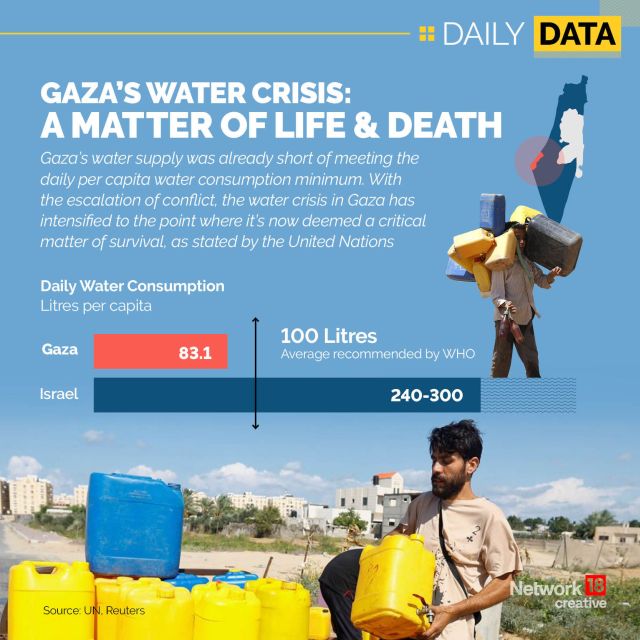
Food and medicines are also running out, with reports coming in that people are skipping meals to sustain the leftover food in the area.
And even though it was announced earlier that humanitarian aid would enter Gaza from today (20 October), there have been delays, causing more strain to the residents of the region.
A US official has expressed scepticism about the trucks being able to pass through the Rafah Crossing on the intended date, citing the volatile nature of the situation. “The situation is still in flux”, the report quoted US officials as saying.
Israel-Hamas war: Related stories
It’s Getting Grimmer in Gaza: How many days of water, food, power left?
Gaza is scarred by poverty. But Hamas leaders live a life of luxury in Qatar
Why has Israel’s ground invasion of Gaza been delayed?
Why it’s unlikely that Israel was behind the hospital blast in Gaza
Has Israel used white phosphorus in Gaza? What’s this toxic chemical?
The Rafah Crossing is Gaza’s only connection to Egypt. It is the sole route for aid to enter Gaza directly from outside Israel and the only exit that does not lead to Israeli territory. Egypt says the roads across the border need to be repaired after they were hit by Israeli airstrikes.
More than 200 trucks and 3,000 tonnes of aid are positioned at or near the Rafah Crossing, The Guardian quoted head of the Red Crescent for North Sinai, Khalid Zayed, as saying.
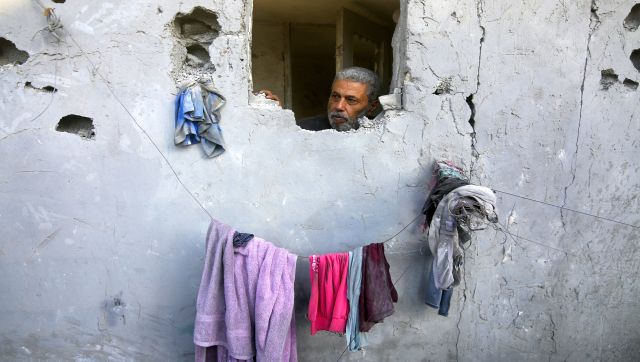
Wars and Mother Nature
The Israel-Hamas war isn’t the first instance of experts raising the issue of the environmental impact. The Russia-Ukraine war has left deep scars not just in the hearts and minds of the people, but also on the landscape.
The conflict has ruined vast swathes of farmland, burned down forests and destroyed national parks. Damage to industrial facilities has caused heavy air, water and soil pollution, exposing residents to toxic chemicals and contaminated water.
Ukraine’s environment minister, Ruslan Strilets, was quoted as saying that the total number of cases of environmental damage tops 2,300, and damage amounting to worth $51.45 billion.
The UN Environment Programme has also stated that the conflict has resulted in multiple air pollution incidents and potentially serious contamination of ground and surface waters.
It remains to be seen what happens next in the Israel-Hamas war, but one thing is certain: the impact – environmentally and economically – will be felt in the years to come.
With inputs from agencies
What's Your Reaction?



























































